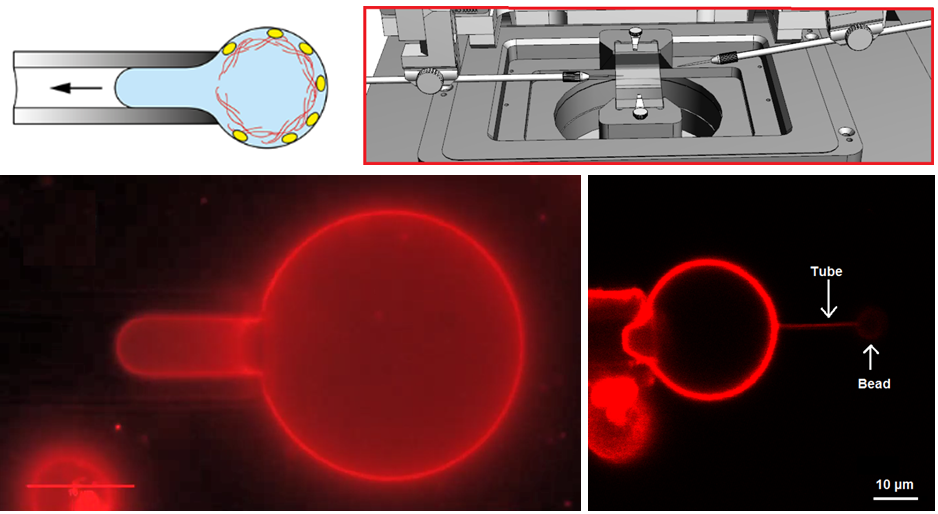Cell Membrane Mechanics
Project Description
Cells are able to cope with large mechanical stresses in their environment even though they’re enveloped by a fragile plasma membrane that is very soft and only of molecular thickness. Many organisms have adapted protective mechanisms that mechanically strengthen the cellular container. We study lipid-based protection strategies used by bacteria and archae, as well as protein-based strategies used by animal cells. To this end, we rebuild cell-sized biomimetic lipid vesicles and characterize the mechanical behavior of both reconstituted and cell-derived membranes by a technique called micropipette aspiration. In the process, we are also developing methods to make vesicles and encapsulate protein solutions under physiological conditions.
Contact: Lennard van Buren
Collaborators:
- Prof. Siewert-Jan Marrink (RUG, Groningen)
- Prof. Arnold Driessen (RUG, Groningen)
- Dr. Kristina Ganzinger (AMOLF)
Representative publications:
- Weinberger, F-C. Tsai, G.H. Koenderink, T.F. Schmidt, R. Itri, W. Meier, T. Schmatko, A. Schröder, C.M. Marques, Gel-assisted formation of giant unilamellar vesicles, Biophys. J. 105: 154-164 (2013)
- F-C. Tsai, B. Stuhrmann and G.H. Koenderink, Encapsulation of active cytoskeletal protein networks in cell-sized liposomes, Langmuir 27, 10061–10071 (2011).
